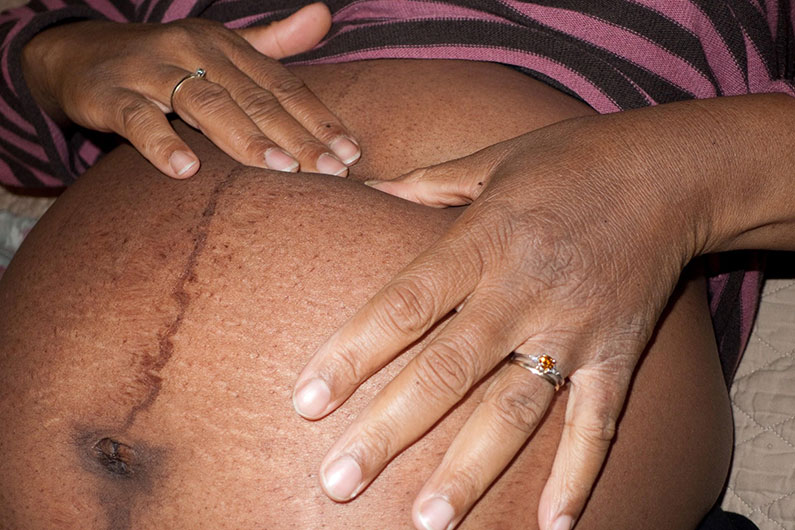[et_pb_section fb_built=”1″ admin_label=”section” _builder_version=”3.22″][et_pb_row admin_label=”row” _builder_version=”3.25″ background_size=”initial” background_position=”top_left” background_repeat=”repeat”][et_pb_column type=”4_4″ _builder_version=”3.25″ custom_padding=”|||” custom_padding__hover=”|||”][et_pb_text _builder_version=”4.3.4″ background_size=”initial” background_position=”top_left” background_repeat=”repeat”]
Being pregnant and black in the United States offers no better survival rates than starting a family in a developing country. In other words, all the fancy equipment and expensive care are not giving black families the advantage of improved birth outcomes. White women also die at higher rates than women birthing in other countries. According to the Central Intelligence Committee, the US fits between Lebanon and Puerto Rico at 138th worst country to survive birth. The US birth system does not support the entire spectrum of health for pregnancy and birth.
Maternal Mortality Causes
To begin to address what’s wrong in the US system there is a need to review the causes and situations around every maternal death. Congress hopes to support the forming of teams to find out more about this failure of our health system. Maternal death review committees gain the support of the Congress of the United States through a new law enabling States and Native organizations and tribes to investigate pregnancy-related deaths from pre-pregnancy through one year following childbirth. This law is called the “Preventing Maternal Deaths Act of 2018.” In addition, the Safe Motherhood Act is amended to empower these committees to identify “determinants of disparities in maternal care, health risks, and health outcomes” for African Americans and other groups whose mothers die in higher numbers than white people.
The World Health Organization states, “Between 1990 and 2013, the maternal mortality ratio for the USA more than doubled from an estimated 12 to 28 maternal deaths per 100 000 births¹ and the country has now a higher ratio than those reported for most high-income countries and the Islamic Republic of Iran, Libya and Turkey.² About half of all maternal deaths in the USA are preventable.²” If half the maternal deaths are preventable and they are now twice as high as in 1990, then the increase might be said to be preventable. Due to the fact that other similar countries have a much lower maternal death rate, this claim is likely to be more than true. WHO goes on, “Each year an estimated 1200¹ women in the USA suffer complications during pregnancy or childbirth that prove fatal and 60,000³ suffer complications that are near-fatal – even though costs of maternity care in the USA in 2012 exceeded 60 billion United States dollars.⁴
Factors of Maternal Mortality
Three factors are probably contributing to the upward trend in maternal mortality and morbidity in the USA. First, there is inconsistent obstetric practice. Hospitals across the USA lack a standard approach to managing obstetric emergencies and the complications of pregnancy and childbirth are often identified too late. Nationally endorsed plans to manage obstetric emergencies and updated training on implementing these plans is a serious and ongoing need.⁵”
We might remember Einstein’s advice that solutions are not created from the methods creating the problems. Amping up the prenatal screening, for instance, with consistency and better application will succeed in catching some people who would have died, certainly. But the overall system will remain missing important elements.
Improving Birth Outcomes
Birth expresses a physiological function within a social dynamic of family, community, and society.
The health benefits of a doula are well proven. In fact, a doula has the widest effect on health outcomes in pregnancy. Support of an admiring partner, and being held in high regard by the medical provider have also been shown to be beneficial. Social support has been rated as important as the cessation of smoking in birth outcomes. Minnesota, Massachusetts, and Washington are three states putting money into doula care.
Health Connect One in Chicago, brought to replication with a team led by Jeretha McKinley, is the nation’s leading effective program including social support and high regard. Jennie Joseph, midwife and policy analyst has created a proven program for culturally relevant pregnancy care for African American families, Commonsense Childbirth. All areas of birth outcomes are enhanced, including low rates of prematurity and low birth weight through their community models.
Using the Spinning Babies® Approach
Spinning Babies® would like to contribute through a prenatal and birth approach that adds through activation of the parasympathetic nervous system. Besides the advantage of pregnancy comfort and birth ease, the jiggle and slow stretch of body balancing techniques may restore a balance of the nervous system for pregnancy which enhances gestation as well as digestion and relaxation. Racism, poverty, and the high stress of modern schedules add a stress to pregnancy and health that can’t be overlooked. Used with a combination of nurse application and social support, the Spinning Babies® approach may offer additional health benefits to birthing families.
Spinning Babies supports the Grand Challenge to offer a full scholarship to a local birth worker of color at each Spinning Babies® Workshop. When you see a local workshop, email the Approved Trainer or contact the office at info@SpinningBabies.com to inquire about availability.
Enjoy this post? You also might like:
- Four Restorative Techniques – Monthly Update
- Dr. Marshall Klaus, Champion of the Doula
- Anti-Racism Commitment
- Cesarean Rates Call for Beyond Border Solutions
Upcoming Workshops
[tribe_events_list limit=”4″]
[/et_pb_text][/et_pb_column][/et_pb_row][/et_pb_section]

